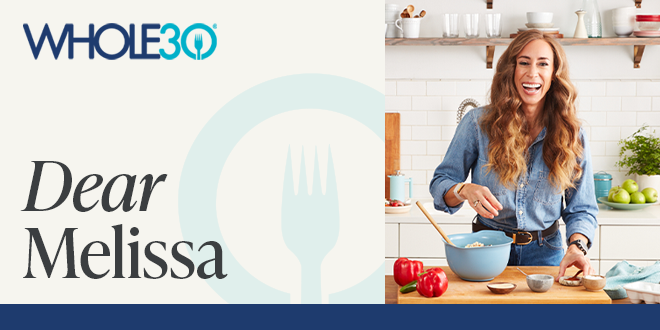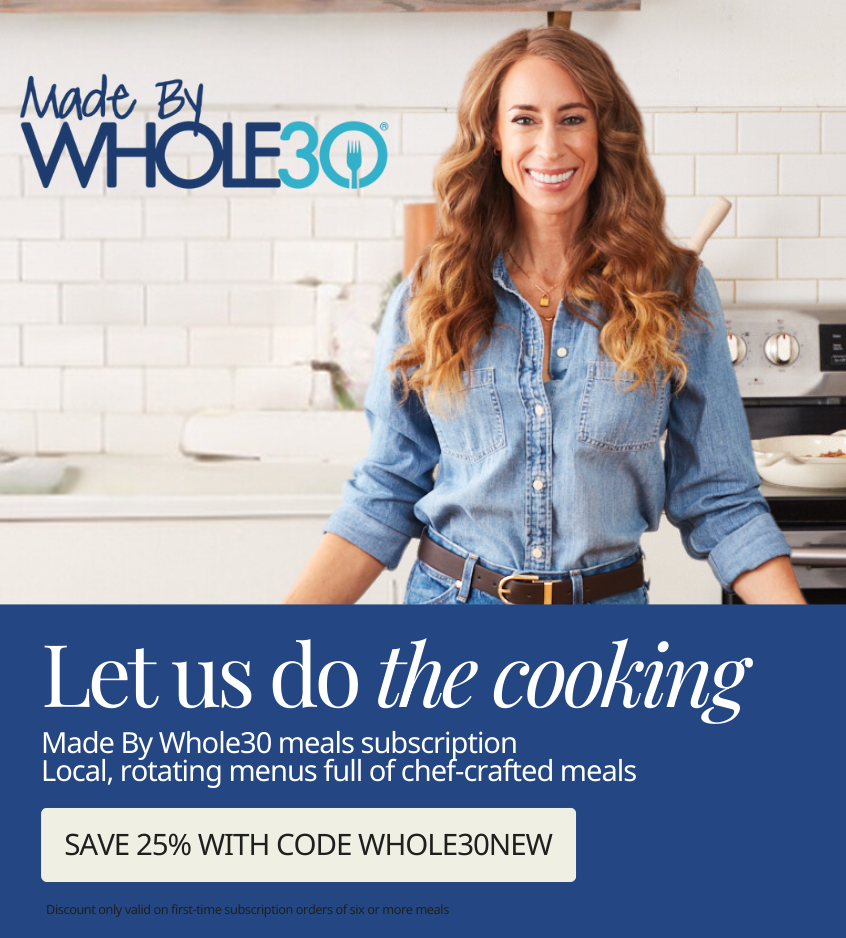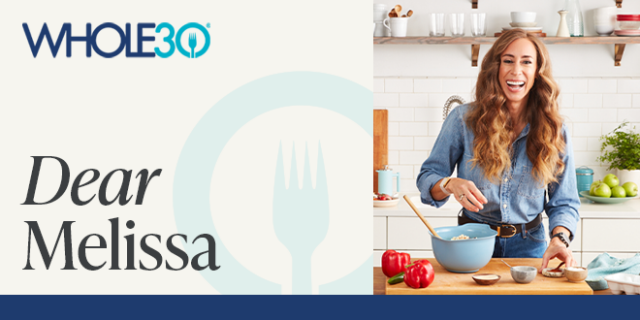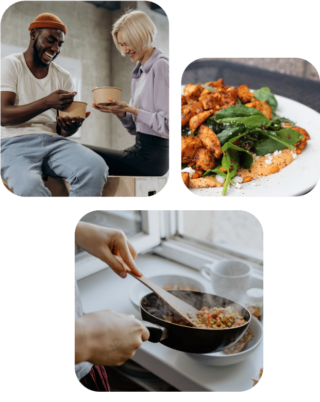As the co-founder of Whole30, this program and community have been my career and my passion since 2009. My connections with the media, health and wellness events, healthcare professionals, and our enormous audience means I see it all. I know what people are cooking, what they’re eating, what they’re saying about various foods and ingredients, and what’s hot (and not) in the world of nutrition.
Here are four trend predictions for 2025, and ideas for incorporating them into your own routines in a way that suits your lifestyle, budget, and goals.
1. Fiber
Fiber is found only in plant foods, and is a form of carbohydrate that isn’t digested or absorbed by the body. As such, it passes through your digestive system largely intact. Dietary fiber serves several key purposes:
- Slows down digestion
- Can reduce the blood sugar response after a meal
- Provides food for beneficial gut bacteria
- Helps to effectively move material through your digestive system.
Fiber is universally accepted as a health-promoting nutrient. It’s been widely studied and can offer tremendous benefits, including weight management, improving cholesterol, and lowering your risk for diabetes, heart disease, and certain types of cancer.
According to the current Dietary Guidelines for America, more than 90% of people are not meeting their dietary fiber requirement. (The USDA recommends adults consume 28 to 34 grams of fiber a day.) This shortfall has been highlighted more in recent mainstream media, further raising awareness of the importance of fiber for health.
Health Trend 2025 Prediction:
We’ll see increased consumer awareness around fiber intake and the fiber content of foods. “High-fiber foods” will dominate Google searches, although people may struggle to differentiate the best sources of fiber (whole or minimally processed versus ultra-processed). Brands will focus on highlighting the fiber content of their products in marketing, and purposefully add sources of fiber (like inulin, tapioca fiber, and cassava flour) to their products.
Caveats:
As with most things, more fiber isn’t always better, especially in one sitting. Too much fiber can produce gas, bloating, and stomach discomfort. It can also reduce the absorption of specific vitamins and minerals. If you’re working to increase fiber in your diet, aim to get most of it from whole foods (especially fruits and vegetables), spread your fiber intake throughout your day, add fiber to your diet slowly, and make sure you drink enough water.
2. Protein
Protein was the macronutrient of the year in 2024, and that will continue in 2025. Protein is the only macronutrient that hasn’t yet been demonized in health and wellness (see dietary fat in the ‘80s and carbs in the ‘90s). It’s also incredibly important for satiety, to preserve or build muscle mass and strength, to maintain bone health, and help with weight management.
Protein intake is especially important as we age, and many of us (especially women) haven’t been eating enough to provide these benefits. In addition, the US Recommended Dietary Allowance (RDA) reflects a protein minimum needed to prevent deficiencies, but is not enough for healthy adults to thrive.
How much protein you need is hotly contested, and varies based on your body, activity levels, age, and goals. In 2024, brands began calling out the protein content of foods and meals more prominently in their marketing, and there was an influx of podcasts, articles, and social media content around increasing your protein intake.
Health Trend 2025 Prediction:
Protein is here to stay. You may benefit from tracking your protein intake, even in the short-term, to ensure you’re getting enough to support your health and lifestyle. Protein can come from both animals and plants, although animal sources are generally the most dense. As with fiber, most of your protein should come from whole or minimally processed foods, although bars, smoothies, and protein powders can help boost your intake.
Caveats:
Again, more protein isn’t always better. Speak with a qualified provider to determine your unique protein needs. Many processed foods that claim to be “high protein” come with other ingredients that may not support your health or goals. Because protein is so popular, influencers and brands are also using that term liberally to market their recipes and supplements—sometimes in misleading ways. (Learn how to evaluate “high protein” claims for yourself.)
3. Bio-individuality
Bio-individuality (as pertains to nutrition) is the idea that there is no “one-size-fits-all” when it comes to diet; you have to figure out what works best for you. If that sounds familiar, it should! It’s the very foundation on which the Whole30 was built. And while this isn’t a unique concept, awareness of diet culture, the rise of wearable technology, and the influence of social media has catapulted the term into 2025.
Generally speaking, proponents of specific diets insist that their one way of eating is best for everyone. Historically, this meant “this one way of eating is how you’ll lose weight.” Today, you’ll find more diets promoted for their health benefits, while still selling you on the idea that everyone should be eating keto, vegan, or carnivore.
Social media allows these ideas to spread quickly, which makes the diet and nutrition landscape even more confusing. Should you be eating only plants, or no plants? Do you need carbs to feel your best, or is going low-carb right for you? It’s hard to know who to trust, and as a result, you feel overwhelmed just trying to eat healthier.
The Whole30 breaks that mold and cuts through the noise. Through our carefully-designed elimination and reintroduction program, you’ll identify the foods that work best in your unique body. Armed with those insights, it’s easy to know what keeps you feeling and performing your best, no matter what your favorite fitness influencer or health magazine says. That kind of confidence and clarity is priceless, which is why the Whole30 continues to remain popular and sees long-term loyalty from successful alumni.
The rise of wearables (like the WHOOP band, Apple watch, and Levels glucose monitor) has taken bio-individuality a step further. This technology allows you to objectively evaluate the health impact of your habits with cold, hard data. Seeing how your dietary patterns, fitness efforts, self-care practices, and other behaviors impact your sleep, stress, cardiovascular health, and blood sugar provides even more knowledge about what works best for you.
Health Trend 2025 Prediction:
Whole30 is here to stay, as people continue to reject toxic weight loss culture and embrace the notion of bio-individuality. Just one round of the Whole30 can help you make food choices with confidence and feel your best. Doing the program more than once can help you refine your food freedom plan and adjust your diet as your health status, goals, and lifestyle evolves. Pairing your Whole30 and food freedom learnings with data from a wearable like WHOOP can provide even more insights, guide you to greater benefits, and motivate you to continue your healthy habits.
Caveat:
The Whole30 is a short-term elimination program, so please don’t treat it like a prescriptive long-term diet. Doing the program for longer than 60 days isn’t recommended, unless your healthcare provider says otherwise. Wearable technology can also lead to information overload. Start with just one device (we recommend a WHOOP band), and don’t forget to also check in with your body, instead of relying solely on the data. See my library of WHOOP resources and get your first month free.
4. Moderation
This might seem like a strange addition coming from the Whole30 co-founder. However, it’s very much in alignment with my health philosophy. As I mentioned above, social media has made nutrition (and health in general) far more complex and confusing. Given the sheer volume of content being generated every day, it’s become harder to get views, likes, and followers. Influencers have learned that making sensational, outrageous, or downright ridiculous claims can bring them attention. (Good or bad, the algorithm doesn’t care—engagement is engagement.)
As a result, nutrition in particular has become a competition of extremes: All meat is toxic. All plants are toxic. All water is toxic (buy this filter). All milk is toxic, unless it’s raw (the irony). I fast for 22 hours a day. I fast for five days at a time. I’ve transcended eating with the power of ashwagandha and red light therapy.
That last one I made up, but would you be surprised? People are exhausted by the claims that absolutely everything is killing them, from cereals to cooking oils to broccoli. If nothing is healthy, why bother? You might as well just eat what you like.
Happily, we’ve already seen pushback against this kind of fearmongering in 2024, and that will only grow in 2025. As a result, we’ll see more mainstream media, credible healthcare professionals, and researchers advocate for moderation. Don’t give up all vegetables, but maybe don’t only eat vegetables. Don’t give up all meat, but maybe add some plant-based protein sources. Don’t only eat ultra-processed foods, but ultra-processed foods can absolutely be part of a health-promoting diet. This trend in particular is one Whole30 will continue to lead and advocate for. After all, this is the entire premise of our food freedom philosophy!
Health Trend 2025 Prediction:
Sadly, the wildest claims will continue to attract attention—but more and more people will be viewing them with the skepticism they deserve, and looking to credible professionals, educators, and programs for guidance. As people reject this fear-based style of influencing, they’ll return to the concept of bio-individuality to determine what works best for them. I also see a wider rejection of the stress and anxiety these “all or nothing” claims promote. This will lead to curating of our social media feeds and engaging more with content that offers realistic, practical advice that applies to more than just the most privileged.
Caveat:
It will remain a challenge not to get sucked into fear-based, all-or-nothing, extreme approaches to diet and nutrition. With many of these claims, there are nuggets of truth, which makes it hard to separate legitimate concerns with conspiracy theories. In 2025, it will be even more important to lean on trusted, reliable resources. When in doubt, return to the basics: Do a Whole30, cook whole foods at home (to your best ability), prioritize sleep, and trust your body to guide you to what works best for you.
Other trends
Outside of strictly nutrition and diet, I also see the conversation around micro-plastics and the threat they pose to the environment and health taking a far bigger stage. As a result, consumers will continue to pressure brands to use less plastic, and will continue to switch their plastic products for stainless steel, glass, aluminum, and other recyclable materials.
Menopause will continue to be a hot topic—and another area rife with misinformation and laypeople offering unproven supplements and “solutions.” (I think it’s only going to get messier in 2025.) The good news is that more people are talking about it, which will also bring about more effective advice and care from qualified professionals.
In the fitness world, the benefits of hard training, whether it’s lifting, jumping, or sprinting, will continue to influence people (especially those approaching menopause) to head into the gym. Rucking will also continue to grow in popularity, for good reason! I wrote an article about this years ago.
In mental health spaces, more people will take advantage of AI technology to provide support, and rely heavily on virtual environments for care and community. Finally, “glimmers” and “hopecore” will be a big mental health topic in 2025, as people purposefully seek good news and hopeful stories to counteract stress and anxiety.
Let Whole30 be a trusted source
Since 2009, Whole30 has long been a trusted source of advice, guidance, and community for millions of people. We hope we can be that space for you as we head into a new year. Whether you do our Original or Plant-Based program, cook from our recipes, use our email resources, or connect with me, we’ll be there with science-backed research, realistic recommendations, a welcoming space, and a wide variety of resources for everyone.
Disclaimer: This page contains affiliate links. We earn a small commission when you purchase through these links.
















